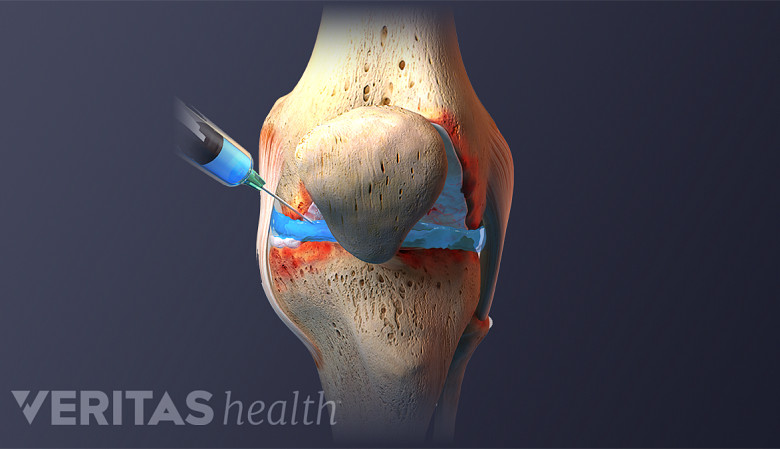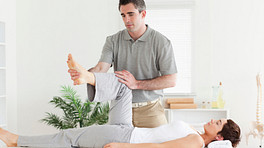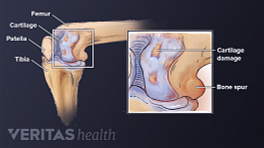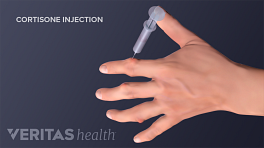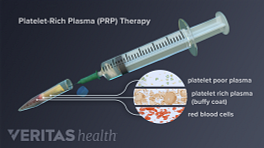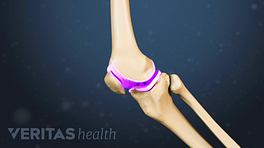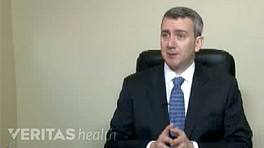The injection technique for administering hyaluronic acid in the knee is called intra-articular injection. The term intra-articular injection refers to an injection given directly into the joint capsule.
This procedure is usually done in a doctor’s office and performed by an orthopedic physician. Some rheumatologists and primary care doctors may also provide this treatment. The injection procedure takes a few minutes and usually does not involve any prior preparation. It is however advisable to discuss the medical history and current medications with the doctor prior to this treatment.
In This Article:
- Hyaluronic Acid Injections for Knee Osteoarthritis
- Do Hyaluronic Acid Injections Work for Knee Osteoarthritis?
- Hyaluronic Acid Injection for Knee Osteoarthritis: Procedure and Risks
Step-by-Step Procedure for Hyaluronic Acid Injection in the Knee
Hyaluronic acid is injected into the knee joint by an experienced professional.
The procedure for hyaluronic acid knee injections involves the following steps:
- The patient either lies on his or her back with the knee straight or sits upright with the knee bent—this position would depend on the doctor’s preferred approach to insert the needle into the knee capsule.
- The knee is wiped down with a disinfectant, such as alcohol or iodine.
- The patient is asked to relax the leg muscles; this will facilitate a successful injection and may also make the injection less painful.
- The doctor may administer a local anesthetic, such as lidocaine, to numb the area.
- If the knee is swollen with excess fluid, the doctor may aspirate (draw out) this fluid with a needle and syringe.
- This injection is only effective if the hyaluronic acid is delivered directly into the knee joint (not the surrounding tissues). For better accuracy, some doctors prefer to use ultrasound while giving the injection. A gel will be applied to the skin near the injection site, and a technician will gently press a hand-held ultrasound device on the gel-covered skin. An image of the joint space will be projected on a computer screen for the doctor to see.
- Using a new, sterile syringe, the doctor will inject the hyaluronic acid on one side of the knee.
- The injection area will be cleaned and bandaged.
- The patient will be told to straighten and bend the knee several times to help spread the material throughout the knee joint.
This injection technique requires the expertise of a trained medical professional who can deliver the hyaluronic acid into the joint capsule of the knee. If the material is injected in any other area of the knee, the effectiveness and safety of the procedure may be reduced.
Following the Hyaluronic Acid Injection
Doctors advise a period of 12 to 24 hours of rest immediately after viscosupplementation. Resting after the injection helps to reduce injection pain and also decreases the chance of hyaluronic acid from being flushed away from the joint capsule. 1 Henrotin Y, Raman R, Richette P, et al. Consensus statement on viscosupplementation with hyaluronic acid for the management of osteoarthritis. Seminars in Arthritis and Rheumatism. 2015;45(2):140-149. doi:10.1016/j.semarthrit.2015.04.011
During this rest period, patients may perform simple, low-impact activities, like slow, short walks. Running, carrying heavy loads, and performing other high impact activities are generally avoided during this period. The pain-relieving effects of this procedure usually appear by around the fourth week after the injection. 2 Altman RD, Manjoo A, Fierlinger A, Niazi F, Nicholls M. The mechanism of action for hyaluronic acid treatment in the osteoarthritic knee: a systematic review. BMC Musculoskelet Disord. 2015;16:321. Published 2015 Oct 26. doi:10.1186/s12891-015-0775-z , 3 Cooper C, Rannou F, Richette P, et al. Use of Intraarticular Hyaluronic Acid in the Management of Knee Osteoarthritis in Clinical Practice. Arthritis Care Res (Hoboken). 2017;69(9):1287-1296. , 4 Trojian TH, Concoff AL, Joy SM, Hatzenbuehler JR, Saulsberry WJ, Coleman CI. AMSSM Scientific Statement Concerning Viscosupplementation Injections for Knee Osteoarthritis. Clinical Journal of Sport Medicine. 2016;26(1):1-11. doi:10.1097/jsm.0000000000000274
Physical therapy
A follow-up program including physical therapy and at-home knee exercises such as single leg flutters is usually recommended. These practices help build and maintain muscle strength around the knee joint.
Watch: Physical Therapy for Knee Osteoarthritis Video
Physical therapy and exercises may also help decrease knee osteoarthritis symptoms and slow down joint degeneration. Patients with severe pain may be prescribed pool therapy, a gentle and effective form of joint strengthening.
See Knee Exercises for Arthritis and Water Therapy for Osteoarthritis
Curcumin Supplements
In addition to physical therapy, an oral supplement, such as curcumin, a chemical found naturally in turmeric spice, may be recommended. There is some evidence that taking curcumin supplements may improve the outcome of hyaluronic acid injection treatment for osteoarthritis.
5
Grover AK, Samson SE. Benefits of antioxidant supplements for knee osteoarthritis: rationale and reality. Nutr J. 2016;15:1. Published 2016 Jan 5. doi:10.1186/s12937-015-0115-z
See Turmeric and Curcumin for Arthritis and Dietary Supplements for Treating Arthritis
Side Effects and Risks of Hyaluronic Acid Injections for Knee Osteoarthritis
Hyaluronic acid injection for the knee is usually considered a safe procedure, but like any medical procedure, it may carry some side effects and risks.
The most common side effects of this procedure include mild swelling and pain at the injection site.
Risks, although rare, may include pseudo-septic arthritic reactions. 6 Maheu E, Rannou F, Reginster JY. Efficacy and safety of hyaluronic acid in the management of osteoarthritis: Evidence from real-life setting trials and surveys. Semin Arthritis Rheum. 2016;45(4 Suppl):S28-33. , 7 Idrissi Z, Benbouazza K, Fourtassi M, et al. Acute pseudo-septic arthritis following viscosuplementation of the knee. Pan Afr Med J. 2012;12:44. Pseudo-septic arthritis is a severe inflammatory reaction or flare at the injection site. If this reaction occurs, it is usually seen within the first three days of injection and may be treated with non-steroidal anti-inflammatory drugs (NSAIDs) or steroids. 7 Idrissi Z, Benbouazza K, Fourtassi M, et al. Acute pseudo-septic arthritis following viscosuplementation of the knee. Pan Afr Med J. 2012;12:44.
Other rare risks include infections, allergic reactions, or bursitis. If such signs or symptoms occur, it is advised to see a doctor immediately.
- 1 Henrotin Y, Raman R, Richette P, et al. Consensus statement on viscosupplementation with hyaluronic acid for the management of osteoarthritis. Seminars in Arthritis and Rheumatism. 2015;45(2):140-149. doi:10.1016/j.semarthrit.2015.04.011
- 2 Altman RD, Manjoo A, Fierlinger A, Niazi F, Nicholls M. The mechanism of action for hyaluronic acid treatment in the osteoarthritic knee: a systematic review. BMC Musculoskelet Disord. 2015;16:321. Published 2015 Oct 26. doi:10.1186/s12891-015-0775-z
- 3 Cooper C, Rannou F, Richette P, et al. Use of Intraarticular Hyaluronic Acid in the Management of Knee Osteoarthritis in Clinical Practice. Arthritis Care Res (Hoboken). 2017;69(9):1287-1296.
- 4 Trojian TH, Concoff AL, Joy SM, Hatzenbuehler JR, Saulsberry WJ, Coleman CI. AMSSM Scientific Statement Concerning Viscosupplementation Injections for Knee Osteoarthritis. Clinical Journal of Sport Medicine. 2016;26(1):1-11. doi:10.1097/jsm.0000000000000274
- 5 Grover AK, Samson SE. Benefits of antioxidant supplements for knee osteoarthritis: rationale and reality. Nutr J. 2016;15:1. Published 2016 Jan 5. doi:10.1186/s12937-015-0115-z
- 6 Maheu E, Rannou F, Reginster JY. Efficacy and safety of hyaluronic acid in the management of osteoarthritis: Evidence from real-life setting trials and surveys. Semin Arthritis Rheum. 2016;45(4 Suppl):S28-33.
- 7 Idrissi Z, Benbouazza K, Fourtassi M, et al. Acute pseudo-septic arthritis following viscosuplementation of the knee. Pan Afr Med J. 2012;12:44.

